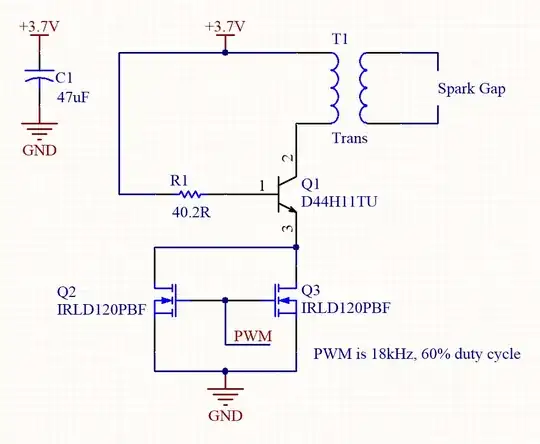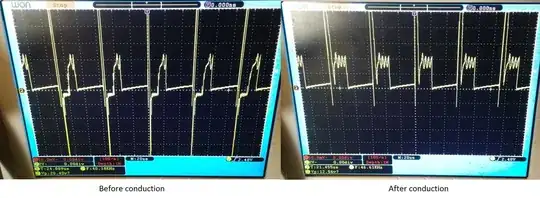This is a follow-up to my previous question. I am trying to increase the spark gap distance of an arc lighter without increasing the supply voltage - I'm using a 3.7V li-ion battery to power it. I'm getting a 3.5mm gap at the moment.
I'm using two MOSFETs in parallel to decrease Rds(on). The collector current is about 1A when the secondary of the transformer is sparking. I tried decreasing R1 to increase the collector current. This worked, but didn't make a significant difference in spark gap distance.
I noticed that there's a lot of noise at both sides of the primary. I filtered out the noise at the supply using a 47uF decoupling capacitor. The signal at the collector does not appear to be a square wave - it is very choppy and includes 125V spikes. I tried to filter this out using a revere-biased 3.6V Zener diode with a current limiting resistor (limiting the current to around 20mA). This did not fix the voltage spikes and the choppiness of the primary input. The below picture shows the collector voltage before and after sparking/conduction.
I also tried different frequencies and duty cycles, and this one seemed to be the best. I have considered a DC-DC converter to step up the voltage into the primary, but that would be too bulky based on the currents I'm dealing with.
Any suggestions? I'm open to redesigning the circuit.

